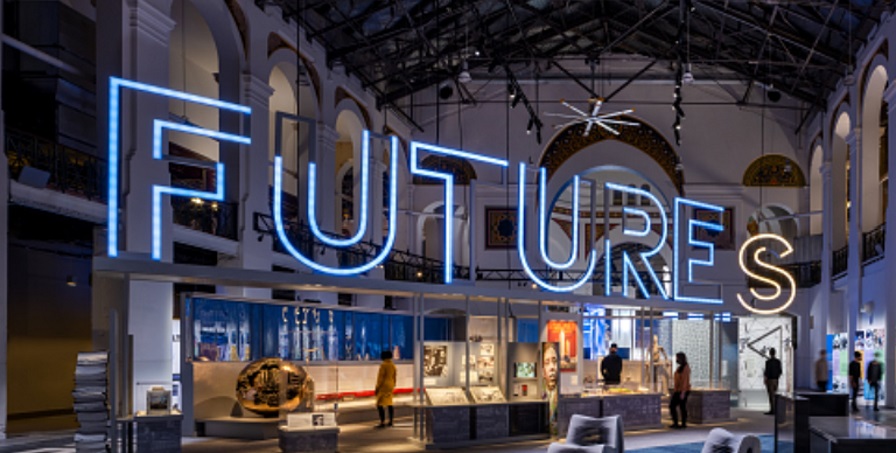
07 Jul IT’S BACK TO THE FUTURES OF HEALTHCARE
Mimi Grant recently participated in the Living Longer Festival: Health + Wellness 2050, held at the Smithsonian’s Arts & Industries Building on the National Mall. Following, Mimi shares a brief photo journal, with captions, of her incredible experience.
In 1879, the “National Museum” – the nation’s first, was “crowned” on the Washington Mall.
Last November, after being closed for the past 20 years, the renamed Smithsonian “Arts + Industries Building” (AIB) reopened its doors to host the “FUTURES” exhibit.

* * * * * * * * * * * * * * * * * * * * * * * *
“FUTURES,” over the eight months of the exhibit, looked at a number of themes,
including the future of AI, Generative Design, Conservation, Energy, Transportation, Work, Fashion, Gaming, and “Healthcare – in 2050.”

* * * * * * * * * * * * * * * * * * * * * * * *
On June 25th, the “Living Longer Festival: Health + Wellness 2050,” highlighted a special demonstration entitled, “The Doctor Is In (SPACE),” “demonstrating” how an astronaut using a MedWand on a patient in space could conceivably link with a terrestrial doctor for an exam.
MedWand’s Co-Founders, Bob Rose, CEO, and Samir Qamar, MD, CMO, were frequently seen at the exhibit answering questions from the 12,000 visitors who were there on “Solstice Saturday,” when several of the Smithsonian museums, including AIB, stayed open late – some till midnight.
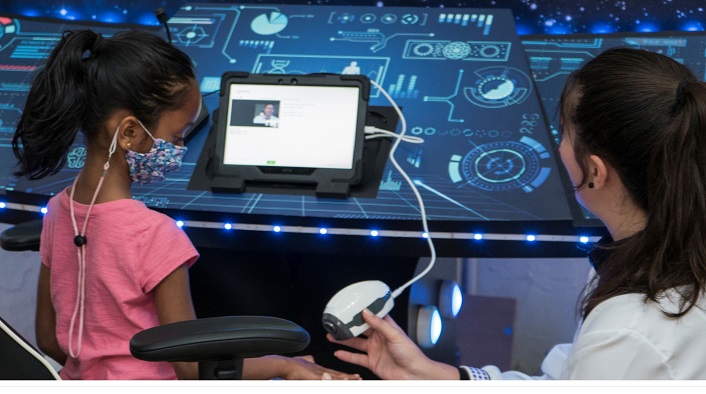
* * * * * * * * * * * * * * * * * * * * * * * *
Later, I had the honor of moderating an outstanding panel of experts, supplemented with questions from the audience
who “Interrupted Your Regularly Scheduled Panel” throughout “WIYRSP: Living Longer in the Future.” To kick it off, we introduced “Elizabeth,” a great-grandmother, who was captured on her grandson’s iPhone for the masses when she demonstrated her impressive moves as she got down to Bruno Mars at her 100th birthday party surrounded by friends and family.
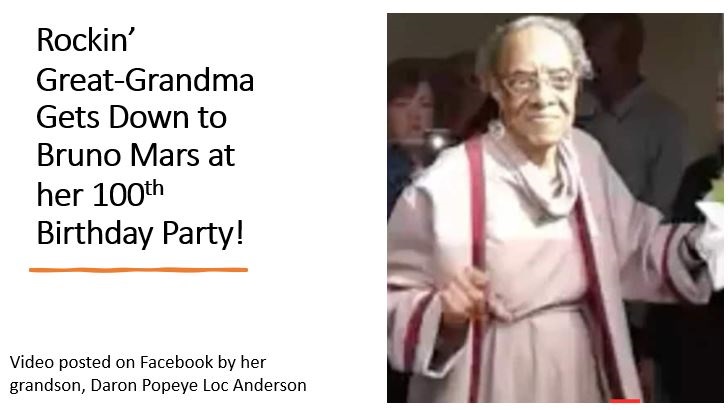
* * * * * * * * * * * * * * * * * * * * * * * *
Since Karen Dorbin heads Communications for the District of Columbia’s Office on Aging, we asked her, “what commonalities she’s found, in her work with octogenarians, that we might adopt so more of us could have the chance of living well past 100.”
To which she responded, they stay active and connected with friends and family, are of service (often to people younger than they are), and – surprisingly, the majority of the octogenarians she’d met in The District, were from South Carolina, and migrated north in the Great Migration to cities further north.
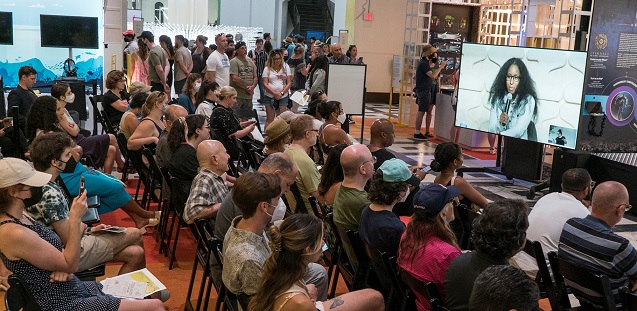
* * * * * * * * * * * * * * * * * * * * * * * *
We next turned to how we could prevent another pandemic like COVID-19 in 2050?
Professor Ellen Carlin, DVM, with Georgetown University’s Center for Global Health Science and Security, is an expert in zoonosis, the transmission of diseases from animals to humans, and she spoke of how we’ll need to be even more careful since minimally over 60% and likely as many as 75% of infectious diseases, like rabies, SARS, MERS – and COVID, were originally zoonotic.
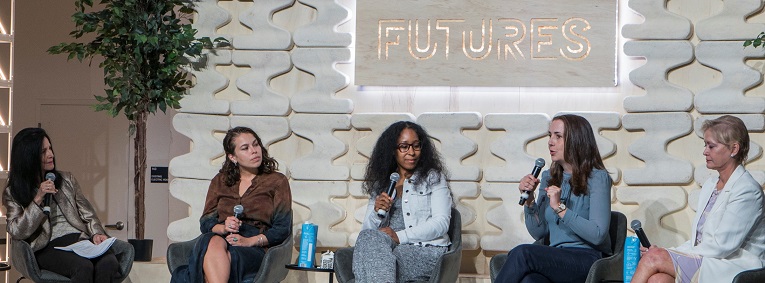
* * * * * * * * * * * * * * * * * * * * * * * *
Marcia Augsburger, JD, with Change Healthcare, and an expert on telehealth, addressed the question of “will we be using telehealth with greater frequency in 2050?”
While she replied with examples of how much its use had grown during the pandemic, she also candidly shared some of the barriers to its continued growth, if reimbursement for it isn’t continued following the end of the Public Health Emergency. Marcia shared how important it is that we, as patients, advise law makers that we want it to continue.
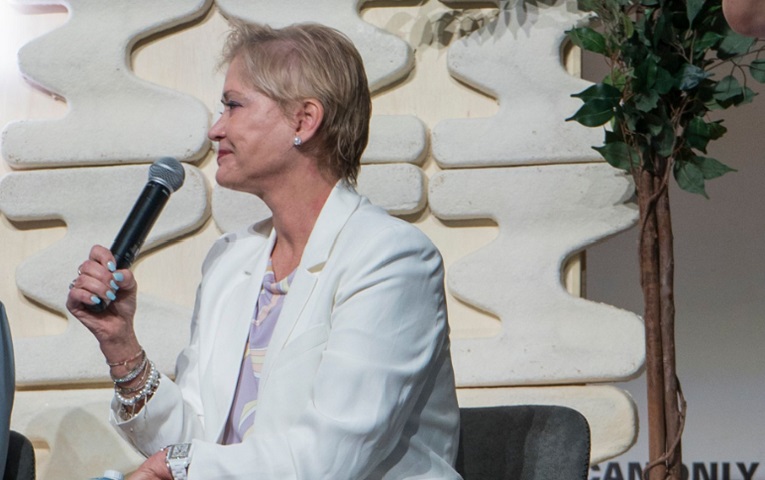
* * * * * * * * * * * * * * * * * * * * * * * *
Three times throughout the session – when they were least expected – the audience had an opportunity to vote on which of two questions they wanted answered.
Definitely a “future-focused” group, with each “interruption” more audience members figured out how to scan the barcode, and vote for the question they wanted to hear addressed. With full transparency, everyone could see in real time the rising bars, indicating the likely winner – with no recounts necessary!
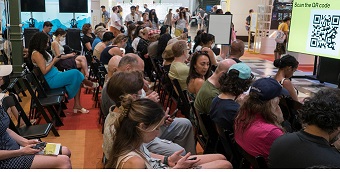
* * * * * * * * * * * * * * * * * * * * * * * *
Throughout the session, the audience was also encouraged to write their own questions to the panel.
In the last minutes of the panel, I was handed an iPad, with several questions (that had been vetted by our Smithsonian show runners). Athena Roesler, of the Milken Institute Center for Public Health, shared her vision of Health in 2050 would be “Health Equity,” which Wikipedia defines as arising from access to the social determinants of health, specifically from wealth, power and prestige.
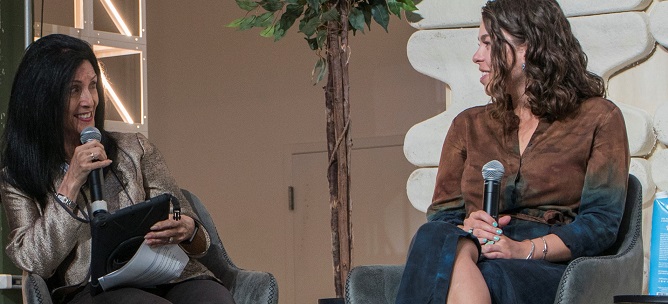
* * * * * * * * * * * * * * * * * * * * * * * *
Amazingly, for a panel discussion held in a very open room (three-stories high), surrounded by fascinating exhibits, I didn’t see anyone in the audience leave during the entire hour the panel spoke.
It made the case for the importance of encouraging the audience’s “interruptions,” and some really great questions!
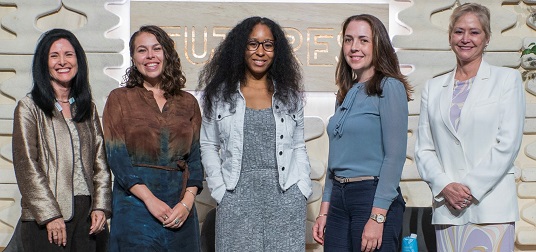
By Mimi Grant, President, Adaptive Business Leaders (ABL) Organization – Round Tables and Events for CEOs of Healthcare and Technology Companies
CLICK HERE TO COMMENT ON THIS POST ON MIMI GRANT’S LINKEDIN PAGE.

